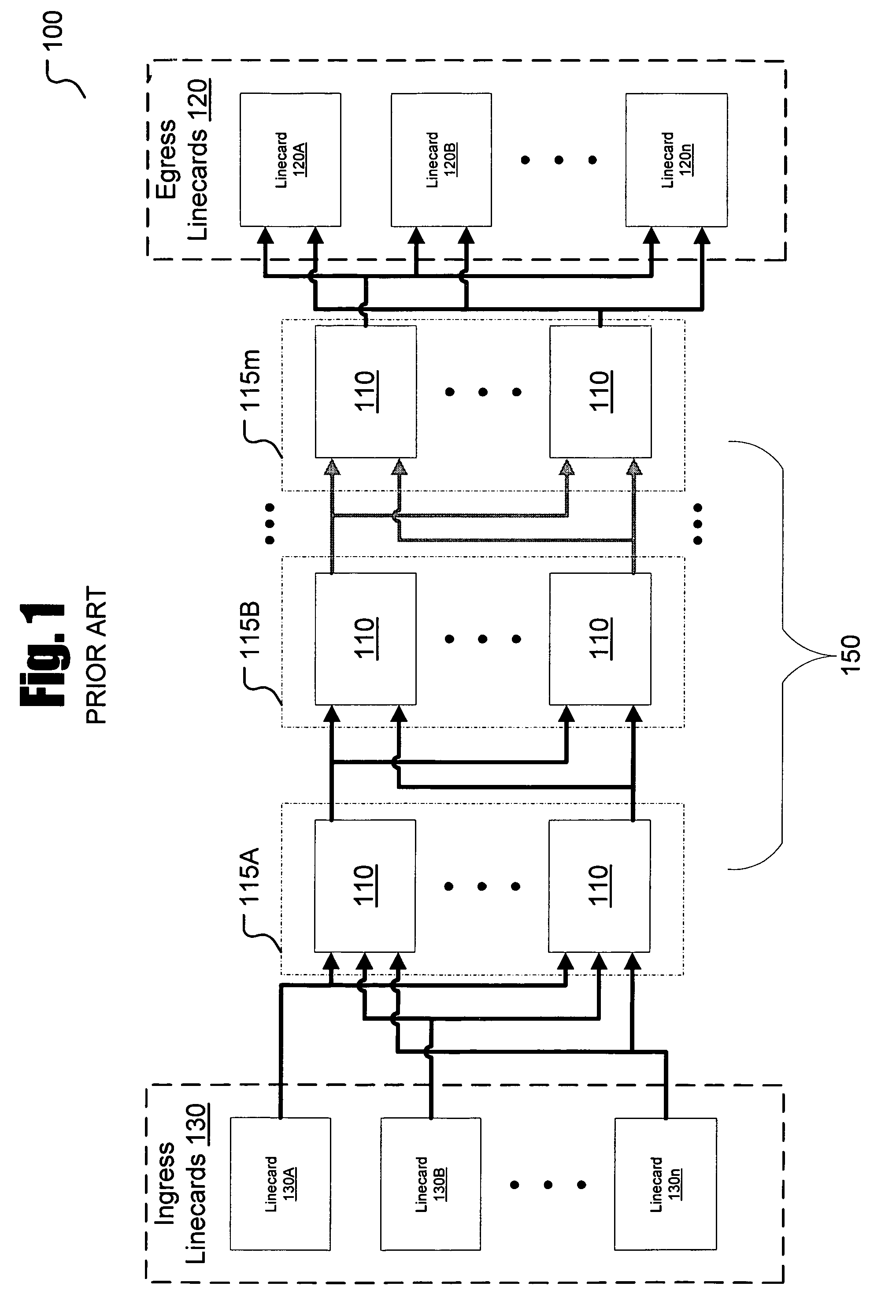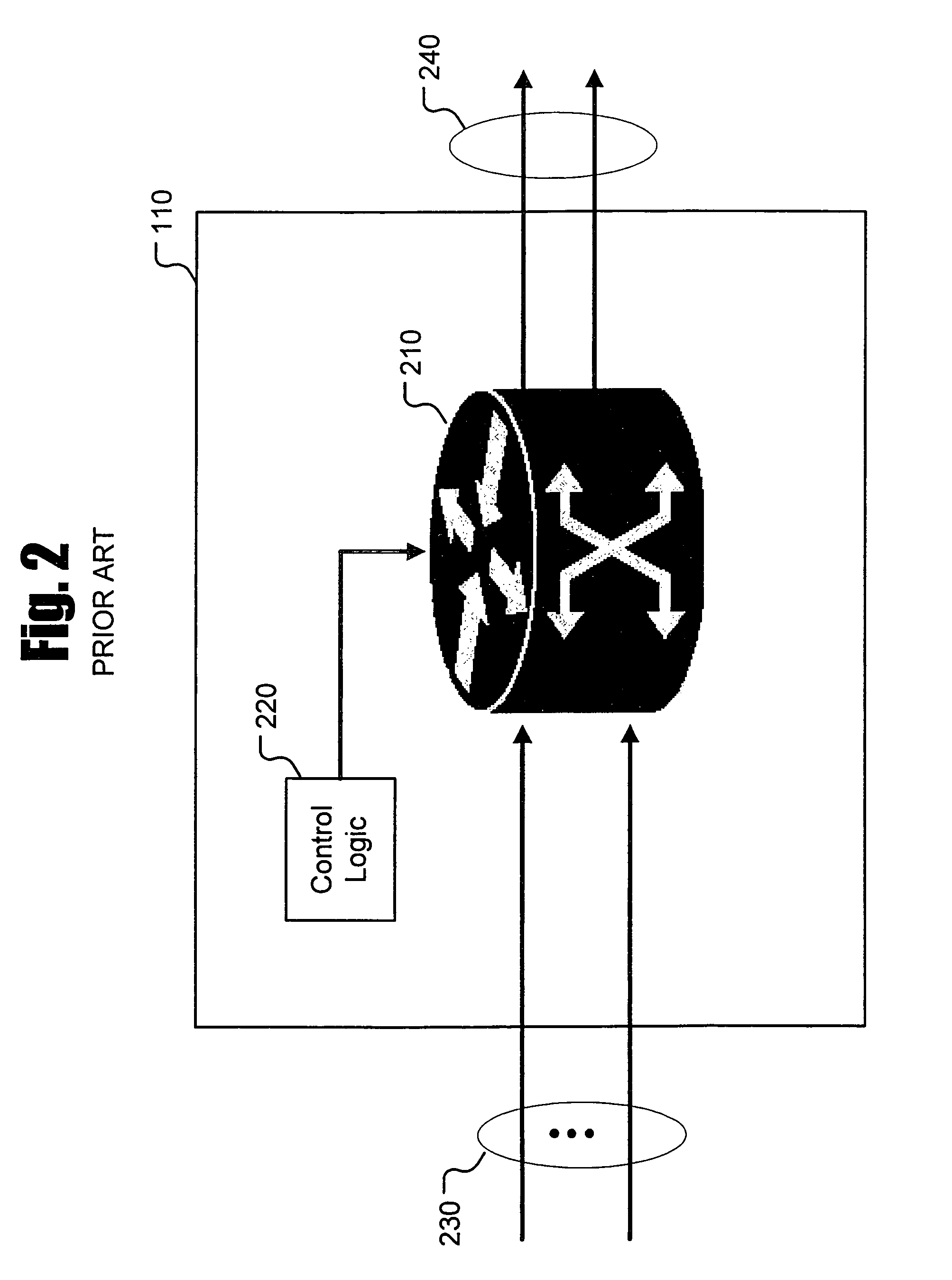Selective backpressure control for multistage switches
a multi-stage switch and selective backpressure technology, applied in data switching networks, frequency-division multiplexes, instruments, etc., can solve problems such as congestion, congestion, and congestion, and achieve efficient and accurate congestion conditions.
- Summary
- Abstract
- Description
- Claims
- Application Information
AI Technical Summary
Benefits of technology
Problems solved by technology
Method used
Image
Examples
embodiment
Representative Embodiment
[0035]Ingress linecards 130 (referring back to FIG. 1 momentarily), collectively consist of one or more physical linecards. These linecards, as are well known in the art, consist of one or more ports connected to a network and conventional packet parsing, classification logic, and buffering circuits. Each linecard typically also includes a queuing structure whereby packets are stored or buffered for sequential transmission out of the linecard into the rest of the switching fabric. Such queuing structures are well known in the art and will not be further discussed herein except to note that multiple forms of queuing structures are contemplated in all embodiments of the present invention. Accordingly, the present invention is not limited to any one form of queuing structure.
[0036]FIG. 2 shows a switch element 110 of a prior art, multi-stage interconnection network. Prior art switch element 110 consists of conventional packet switching circuits 210 and control ...
PUM
 Login to View More
Login to View More Abstract
Description
Claims
Application Information
 Login to View More
Login to View More - R&D
- Intellectual Property
- Life Sciences
- Materials
- Tech Scout
- Unparalleled Data Quality
- Higher Quality Content
- 60% Fewer Hallucinations
Browse by: Latest US Patents, China's latest patents, Technical Efficacy Thesaurus, Application Domain, Technology Topic, Popular Technical Reports.
© 2025 PatSnap. All rights reserved.Legal|Privacy policy|Modern Slavery Act Transparency Statement|Sitemap|About US| Contact US: help@patsnap.com



